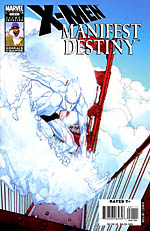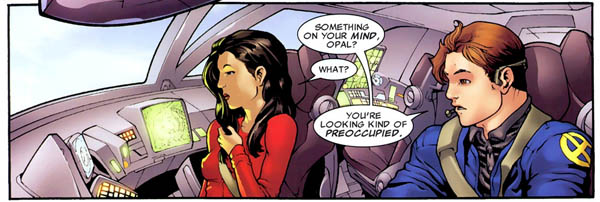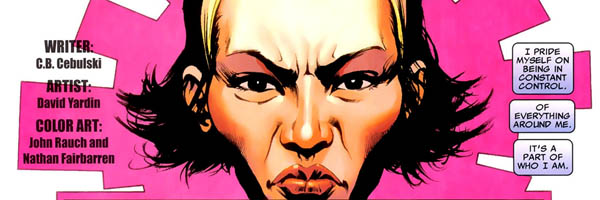 Written by James Asmus, Mike Carey, C.B. Cebulski
Written by James Asmus, Mike Carey, C.B. Cebulski
Penciled by Chris Burham, Michael Ryan, David Yardin
Inked by Chris Burham, Victor Olazaba, David Yardin
40 pages, color
Published by Marvel Comics
Is it just me or the X-Men trapped in a never-ending cycle of subtitled stories and eras? Since October of last year, we’ve had Messiah Complex, Divided We Stand, and now Manifest Destiny. And, not content to just slap the logo on all of the mutant books, there’s also X-Men: Manifest Destiny, a four-issue anthology about some of the mutant characters and how they travel or deal with the move to San Francisco. So far, that’s proved to be just about as variable in quality as you can imagine it would be.
The main story, which will run for all four issues, has Mike Carey and Michael Ryan tackling Iceman and his journey to San Francisco to join the rest of the X-Men. It’s in part a sequel to an X-Men story of Carey’s from a year and a half ago, although for those of us like myself who didn’t read it, he helpfully provides the absolute basics in a bit of expository dialogue between Iceman and his old girlfriend Opal Tanaka. It’s not a bad story in terms of writing or art, although the very nature of the story (dredging up old storylines and characters) makes it feel like something that’s preaching to the hardcore choir. It certainly doesn’t help matters that we’ve already seen Iceman alive and well in San Francisco over in Uncanny X-Men, which certainly robs a bit of suspense from the story as well.

James Asmus and Chris Burnham’s contribution, with Boom-Boom running around San Francisco, is actually exactly what I was expecting from X-Men: Manifest Destiny. It’s a cute story, one where Asmus really nails writing for Boom-Boom had her flippant, devil-may-care attitude. Any story that stop the villains by using a trip to the coffee shop and the use of a thinly disguised version of Facebook is worth a few laughs. I do wish that Burnham’s art didn’t involve Boom-Boom wandering around the city in what looks like a cheap piece of lingerie (complete with two panty shots); it’s cringe-worthy and a little wrong-headed in places. It’s too bad because some panels are great, like Boom-Boom’s glare at the villain while muttering, "I was excited about that sale." It’s ultimately right in the middle ground; fun, but aside from the strange artistic choices, slightly forgettable.

On the other hand, I wish I could forget C.B. Cebulski and David Yardin’s story about Karma, the former New Mutant with the power to possess people. It’s dull and predictable from the very first page, with Karma having self-doubt even as she struggles (through a mass of back-story exposition that takes up three pages) to find control in her life. Yardin’s art looks pinched and ugly here, but considering the groans you’ll get from this story as it sluggishly hits every single moment of predictability, it’s almost nice to have a distraction from the script. When you consider that Matt Fraction and Ed Brubaker wrote the character better in all of two pages over in Uncanny X-Men, well, that’s not a good sign.

In the end? X-Men: Manifest Destiny comes across as a clearing house for sub-par short stories that would have seen print in an X-Men Family anthology if it existed instead. As fun and strong as the revamped Uncanny X-Men is, this comic feels like it’s riding on its coattails, and with limited success. Right now, there’s nothing here you’ll remember the next day, and that’s unfortunate.
